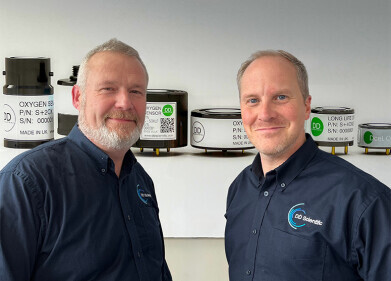Business News
What Are India's Goals for Renewable Energy?
Mar 25 2020
Covering an area greater than 1.2 billion square miles and home to 1.34 billion people, India is the seventh largest country by size and the second largest by population. It’s no surprise, then, that its energy needs are similarly substantial; according to BP's Statistical Review of World Energy, it consumed 809.2 million tonnes of oil equivalent in 2018. That makes it the third biggest consumer of energy in the world, behind only China and the USA.
Around 75% of that energy is derived from fossil fuels, with approximately 44% coming from coal-fired power stations (widely accepted as the least environmentally friendly method of power production). However, the country has increased its focus on environmental monitoring in recent years, with the Indian government announcing ambitious targets for renewable energy. What exactly does it propose, and are the goals feasible?
Lofty ambitions
In 2016, Prime Minister Narendra Modi announced that India would aim to produce 175GW of renewable energy by 2022. Breaking that target down into its constituent parts, the country is targeting 100GW of solar, 60GW from wind, 10GW from bio-power and 5GW from small-scale hydropower. For context, renewables currently produce around 86.3GW in the country.
The long-term objectives are similarly ambitious. By 2030, Prime Minister Modi has targeted a total of 450GW of renewable capacity, rising to 520GW with the inclusion of large-scale hydropower. Having hosted the Conference on Emissions Monitoring (CEM) last year, the country is looking to take advantage of the experience and expertise of other nations to kickstart their own renewable revolution.
Out of reach?
While India have already made strides towards improving their renewable profile, it will take some drastic measures to ensure they achieve their short-term targets. For example, the country enjoyed less than 1GW of solar power as recently as 2010; today, they have 34GW. 25GW of wind power have also been added in that time, with other renewables contributing to the current 86.3GW out of a total 369GW in the country as of January 2020.
In order to reach the first target, India would have to add over double their existing capacity in under two years, which would comprise a tall order for any country. The 2030 objective could prove to be equally as challenging, although Tim Buckley from the Institute for Energy Economics and Financial Analysis (IEEFA) believes it could be possible. “IEEFA views this as aggressive but achievable, subject to the government delivering policy stability, transparency and consistency,” he said.
Overcoming the intermittency issue
Perhaps the biggest obstacle to India (and other nations) achieving their renewable energy targets is the issue of intermittency. Given that the sun and wind cannot be relied upon to deliver energy around the clock, viable storage options must be developed to allow plants to retain some power for use during periods of downtime. Currently, such options do not exist on a large or affordable scale.
However, costs have been falling in recent years and if that trend continues, India could take advantage of those solutions to put renewables at the forefront of its energy portfolio. Until that happens, fossil fuels (and coal in particular) are likely to dominate proceedings, but the winds of change are certainly in the offing.
Digital Edition
IET 34.2 March 2024
April 2024
Gas Detection - Biogas batch fermentation system for laboratory use with automatic gas analysis in real time Water/Wastewater - Upcycling sensors for sustainable nature management - Prist...
View all digital editions
Events
Apr 24 2024 Jakarta, Indonesia
Apr 24 2024 Sao Paulo, Brasil
Apr 30 2024 Melbourne, Australia
Apr 30 2024 Birmingham, UK
May 03 2024 Seoul, South Korea
.jpg)


















